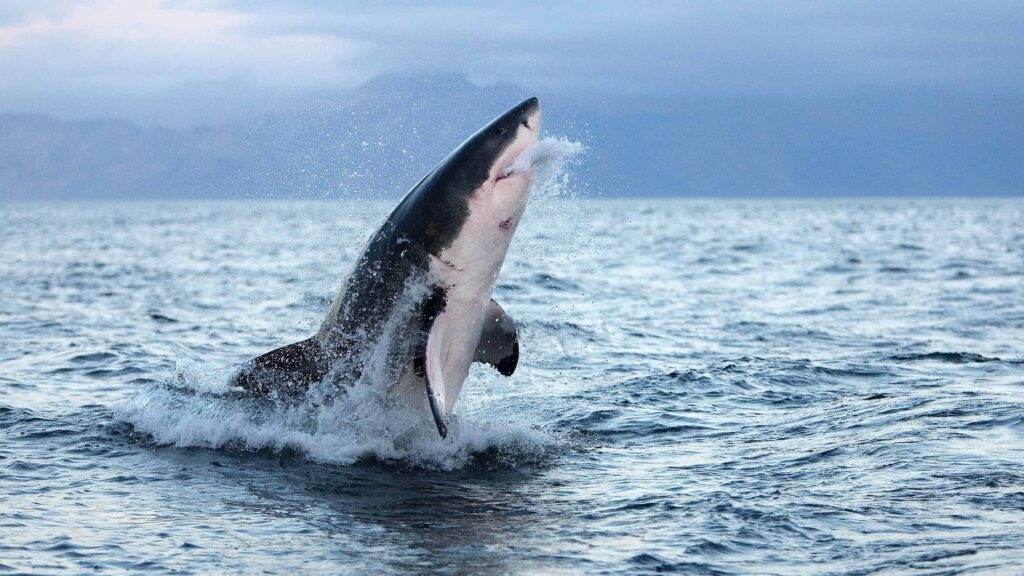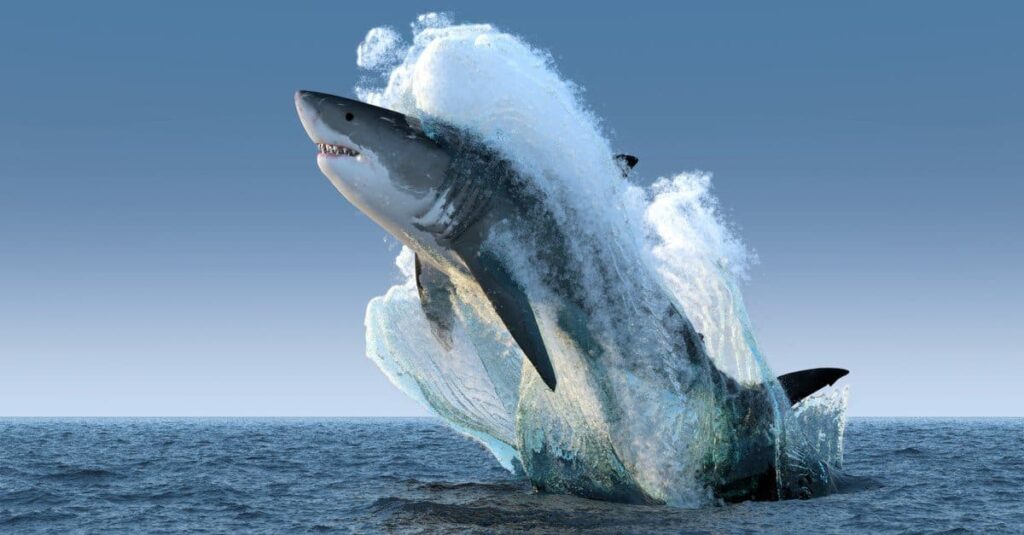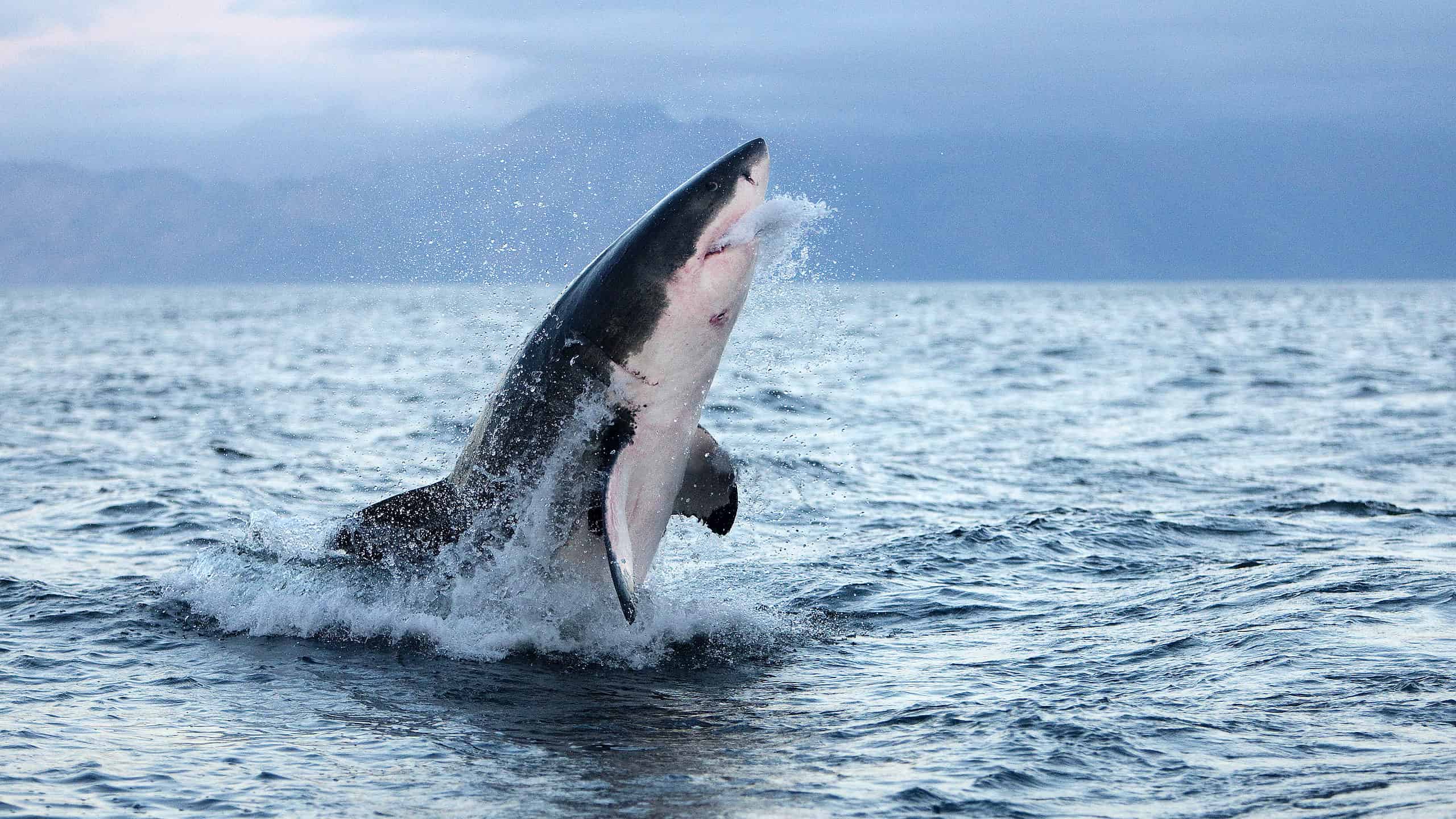
A great white shark suddenly leaping into the air in your prime surfing spot may be both awe-inspiring and terrifying. This incredible video was captured just south of San Clemente, California. Most of the surfers seem unaware of the potential danger behind them. Even though the shark is some distance from the shore, a shark on a mission can swim 40mph near the surface.
Great white sharks are nothing like the man-eating monster portrayed in the 1975 classic Jaws. However, they are apex predators and should be respected as such. Discover more about great white sharks and their flying leaps, and learn about the risks to humans sharing their habitats.
Where in the World Are Great White Sharks?
Great white sharks live in oceans all over the world. However, they prefer temperate and tropical water. South Africa, New Zealand, Australia, and the U.S. have some of the highest populations. Great white sharks live at different depths, from close to the surface to deeper than 6,000 feet.
In the U.S., great white sharks can be found in the Atlantic from Maine to the Caribbean. They have also been seen in the Gulf of Mexico. In the Pacific, the sharks range from Alaska to California and Hawaii. The Southern California waters where the video was filmed are a well-known nursery for great white sharks. Juvenile sharks are frequently sighted along the shores of nearby beaches. The young sharks remain close to the nursery because the water is warmer, easy meals like fish and stingrays are abundant, and the shallow water provides safety from predators.

©Alexyz3d/Shutterstock.com
The Great White’s Leap Technique
The shark’s astonishing leap is a technique called breaching. A great white shark’s musculature was primarily designed for rapid, not sustained, movement. So a long chase is likely to result in the shark going hungry. When hunting fast-swimming prey like seals and sea lions, great white sharks launch out of the water to quickly stun and incapacitate unsuspecting targets.
Although breaching attacks are successful about half the time, they’re not as common as one might think. Mature great white sharks can get as long as 20 feet and weigh over 4,000 pounds. So, it requires a great deal of energy for a shark to hurl its body high enough to clear the water. Unless the prey necessitates a stealth attack, other hunting tactics such as stalking may be preferable.
How Dangerous Are Great White Sharks?
Data from the International Shark Attack File indicates shark attacks are rare, but great whites are one of the most likely culprits. In 2023, there were only 36 unprovoked shark bites across all species in the U.S. Attacks most often occur in water around 10-30 feet deep. So, swimmers, surfers, snorkelers, divers, and kayakers may be at risk. Some scientists believe humans can be mistaken for seals or sea lions. However, the shark’s tactics when approaching humans are markedly different, suggesting the attacks are unrelated to predation.
Great white sharks are curious and often bite things that are not prey. Scientists believe they use their teeth to gather evidence. They may also take a sample bite to see if it’s something they want to eat. Fortunately, great white sharks find humans unpalatable. This is why researchers believe there are more survivors than fatalities, with less than 17% of great white shark attacks being fatal.
